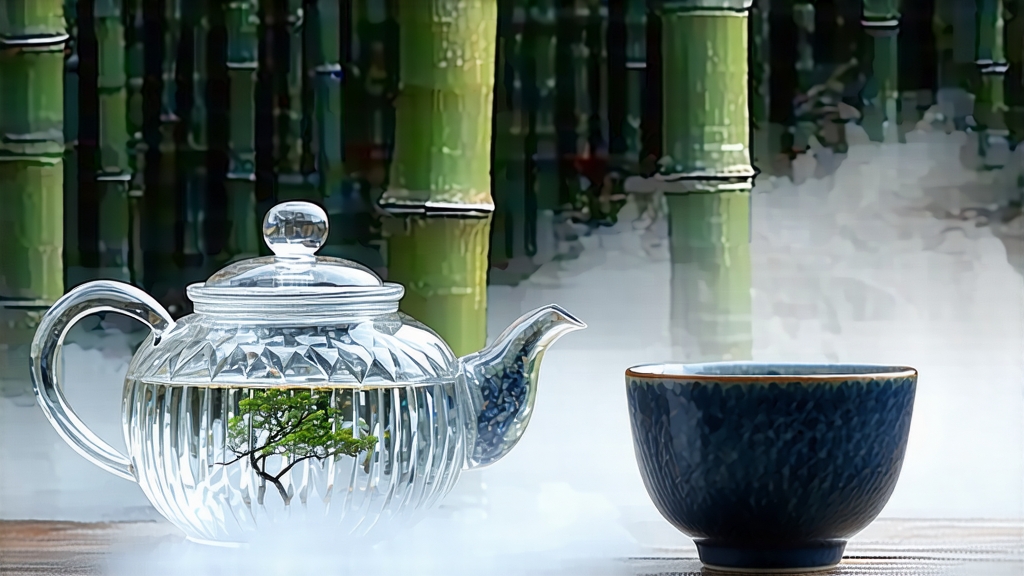
When early March dew still clings to the granite soils of northern Fujian, tea gardens above the towns of Fuding and Zhenghe enter a brief, almost whispered season. Between the last winter plum petals and the first camellia blossoms, only the most tender, unopened leaf buds are coaxed from ancient dai-bai, xiao-bai and narcissus cultivars. These buds—plump, ivory-white and downy like newborn panda fur—become Bai Hao Yin Zhen, the legendary Silver Needle that emperors once hoarded and Tang dynasty poets praised as “liquid moonlight.”
History records the first systematic mention of “white tea” in the Song-era treatise Da-Guan Cha-Lun, yet Silver Needle itself crystallized as a commercial grade only during the Qing Qianlong period (1736-95), when improved roadways allowed Fuding growers to rush their delicate harvest to the foreign warehouses of Guangzhou. European merchants mistook the fuzzy buds for mould, then re-named the tea “Silver Tips” once its honeydrop sweetness conquered London drawing rooms. By 1891 Silver Needle led Fujian’s export list, fetching twice the price of Keemun and inspiring counterfeit versions from Ceylon to the Caucasus.
Botanically, Silver Needle is not a style but a varietal-specific expression: true Yin Zhen must be plucked from either Fuding Da-Bai or Zhenghe Da-Bai bushes whose larger cell vacuoles store more amino acids, translating into brothy sweetness after minimal processing. Each bud is an unopened leaf embryo still fed by the plant’s winter starch reserves; if even the tiniest first leaf unfurls, the lot downgrades to Bai Mu Dan. This strict selection means a single kilogram demands roughly thirty-eight thousand hand-snipped buds, all gathered before ten a.m. while residual dew acts as a natural antioxidant shield.
Craft begins the moment bamboo baskets touch the garden floor. Buds are laid no thicker than two centimeters on water-sedge trays and wheeled into a sunning yard where brick walls radiate gentle, reflected heat. For the next forty-eight hours they rest under a choreography of shade nets, sea breezes from Sandu’ao Bay and the slow exhalation of mountain mist. Enzymatic oxidation is coaxed to the edge of 5–8 %—just enough to convert grassy aldehydes into peach-lactones—then halted by cool night air. No rolling, no pan-firing, no kneading: only the withering phase, followed by a low-temperature bake at 40 °C to stabilize moisture to 5 %. The result is a tea that retains the original contour of the bud, its surface silvery because microscopic trichomes scatter light like frost on a winter apple.
To unlock that captured frost, water must be persuaded, not forced. Use a tall, thin glass or a gaiwan of 120 ml; heat spring water to 80 °C, then wait forty seconds until the steam thins to a gossamer veil. Pour along the vessel’s wall, allowing buds to sink in slow motion. First infusions need only twenty seconds; the liquor will be the color of first morning light, scent drifting between fresh lychee and wild orchid. Second infusion stretches to thirty-five seconds, revealing a creamier body reminiscent of steamed almond tofu. By the fifth pour, elongate to two minutes and notice a subtle transition from melon to cedar bark, a reminder that white teas age with the quiet grace of Sauternes.
Professional cupping follows a low-dose, high-volume protocol: three grams of buds in a 250 ml white porcelain tasting set, 85 °C water, three minutes steep. Evaluate clarity first—true Silver Needle should refract light like liquid quartz. Next, sniff the underside of the lid: top notes must oscillate between cucumber skin and honeycomb, never hay or boiled potato (signs of over-withering). On the palate, search for a kinetic tension: amino acids should coat the tongue while catechins gently grip the gums, creating a “returning sweetness” (hui gan) that arrives thirty seconds after swallowing. Finally, inspect the spent buds; intact tips that stand upright like miniature ivory spears indicate correct pluck and craft.
Ageability distinguishes Silver Needle from almost every other white tea. Stored in an oxygen-reduced, 45 % relative-humidity environment, the buds undergo a